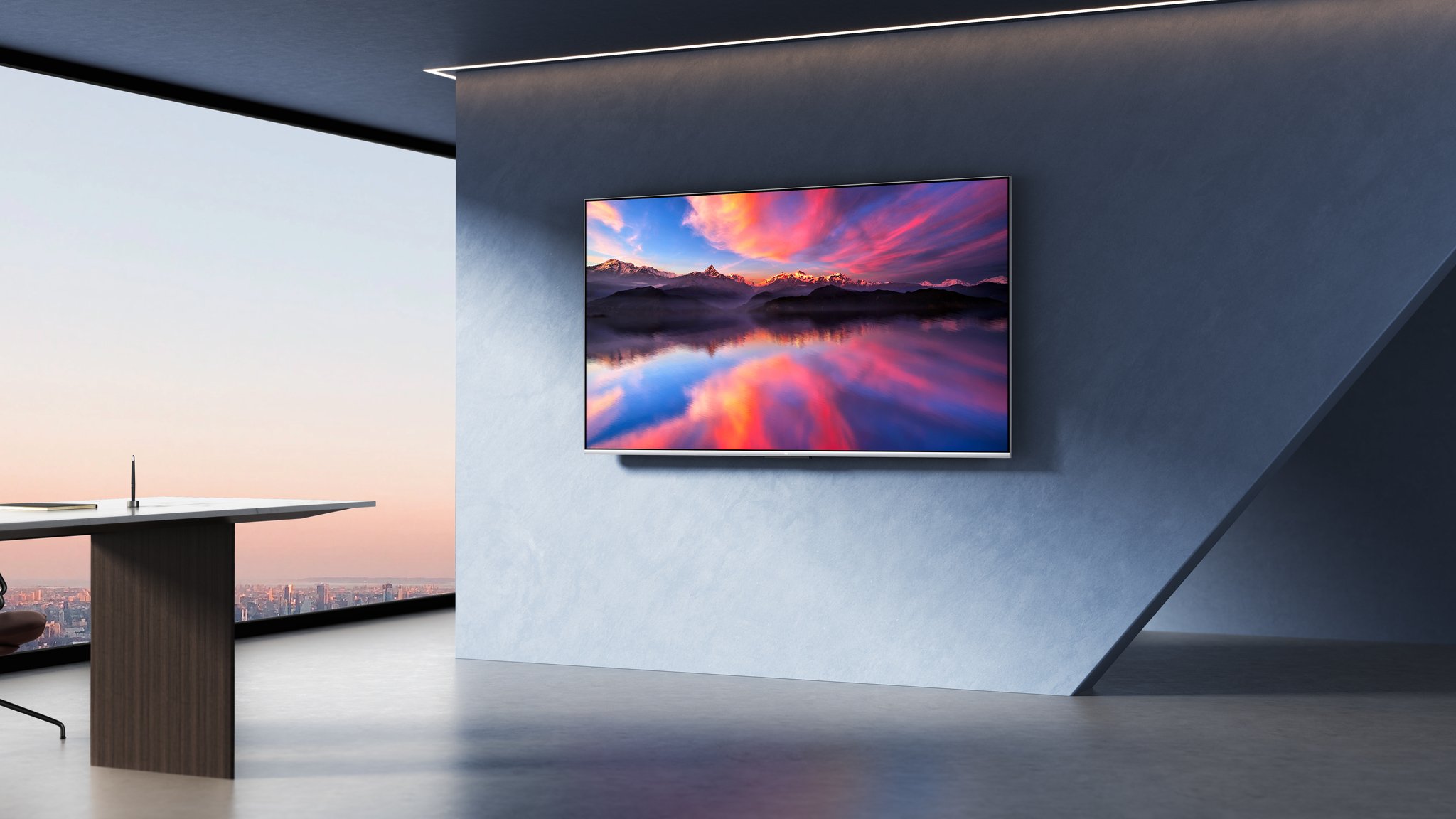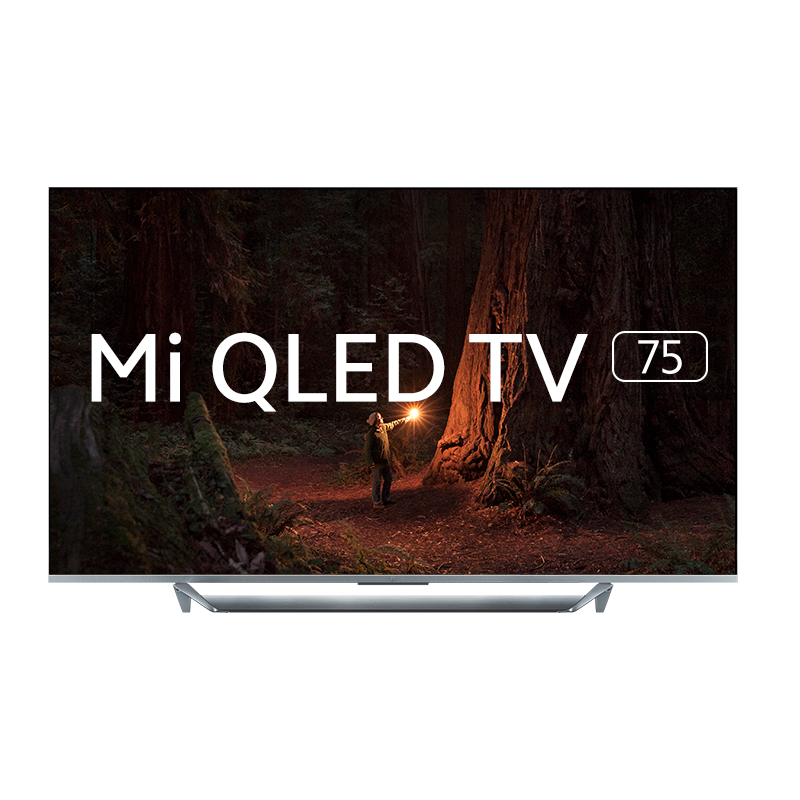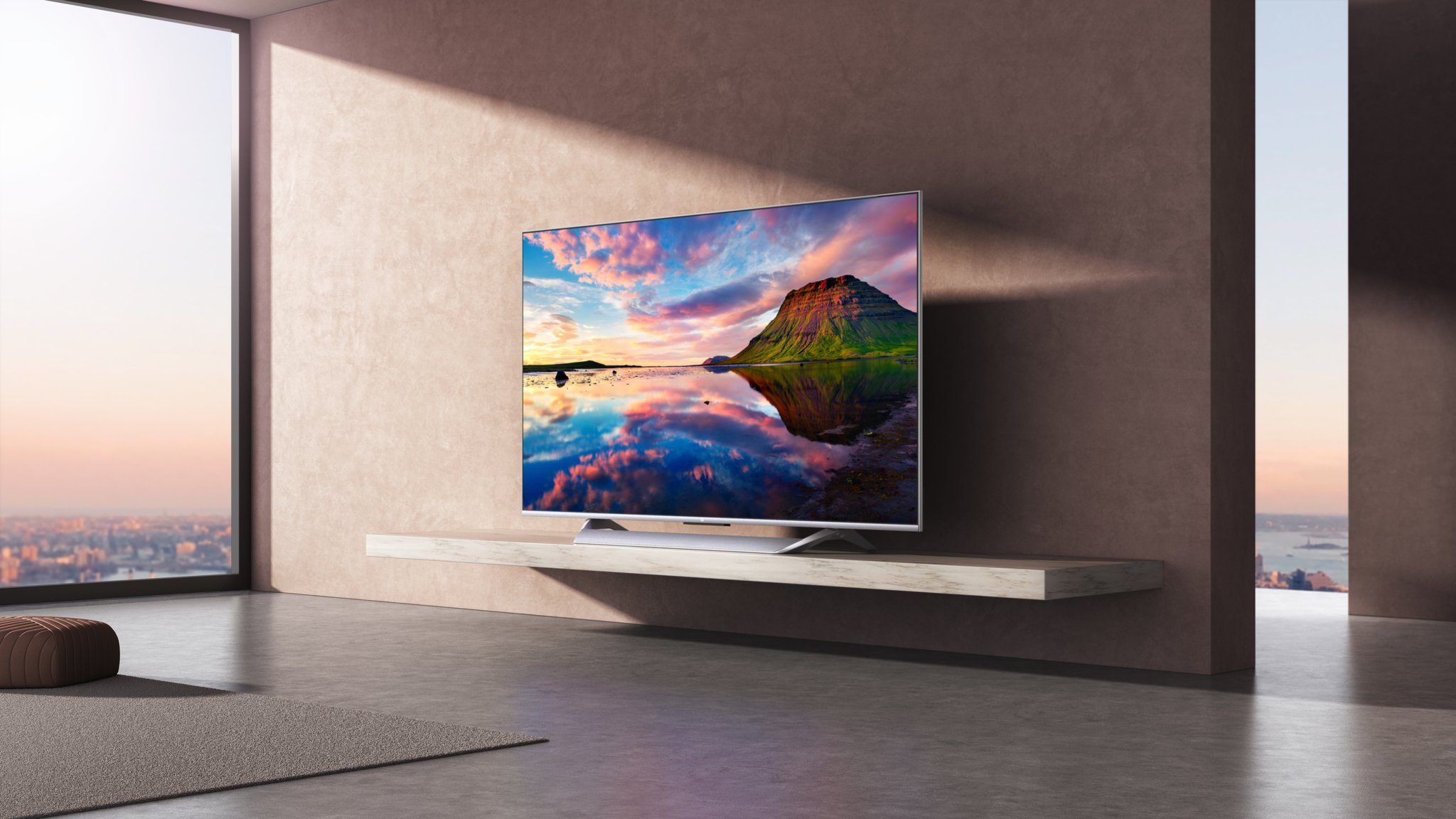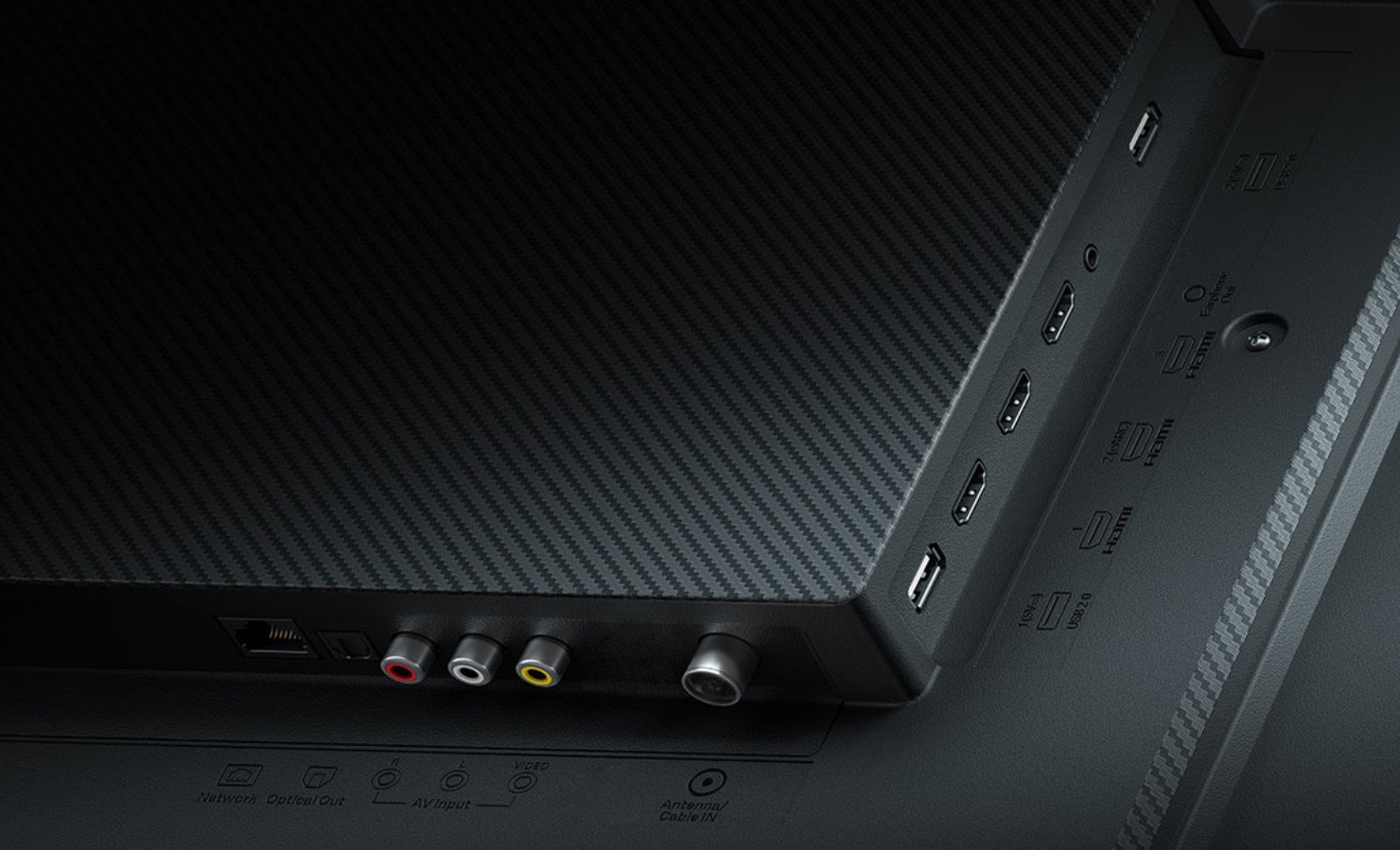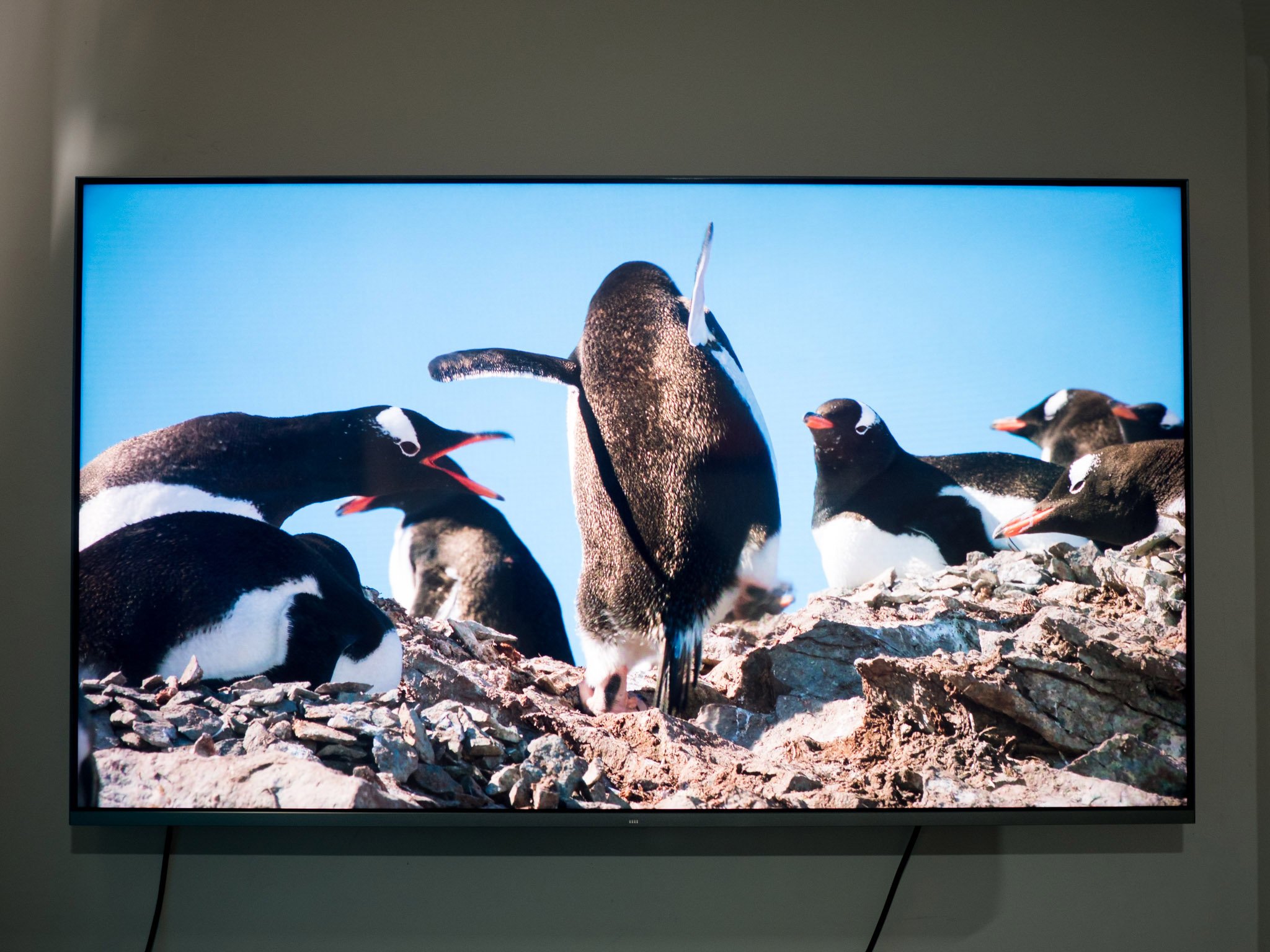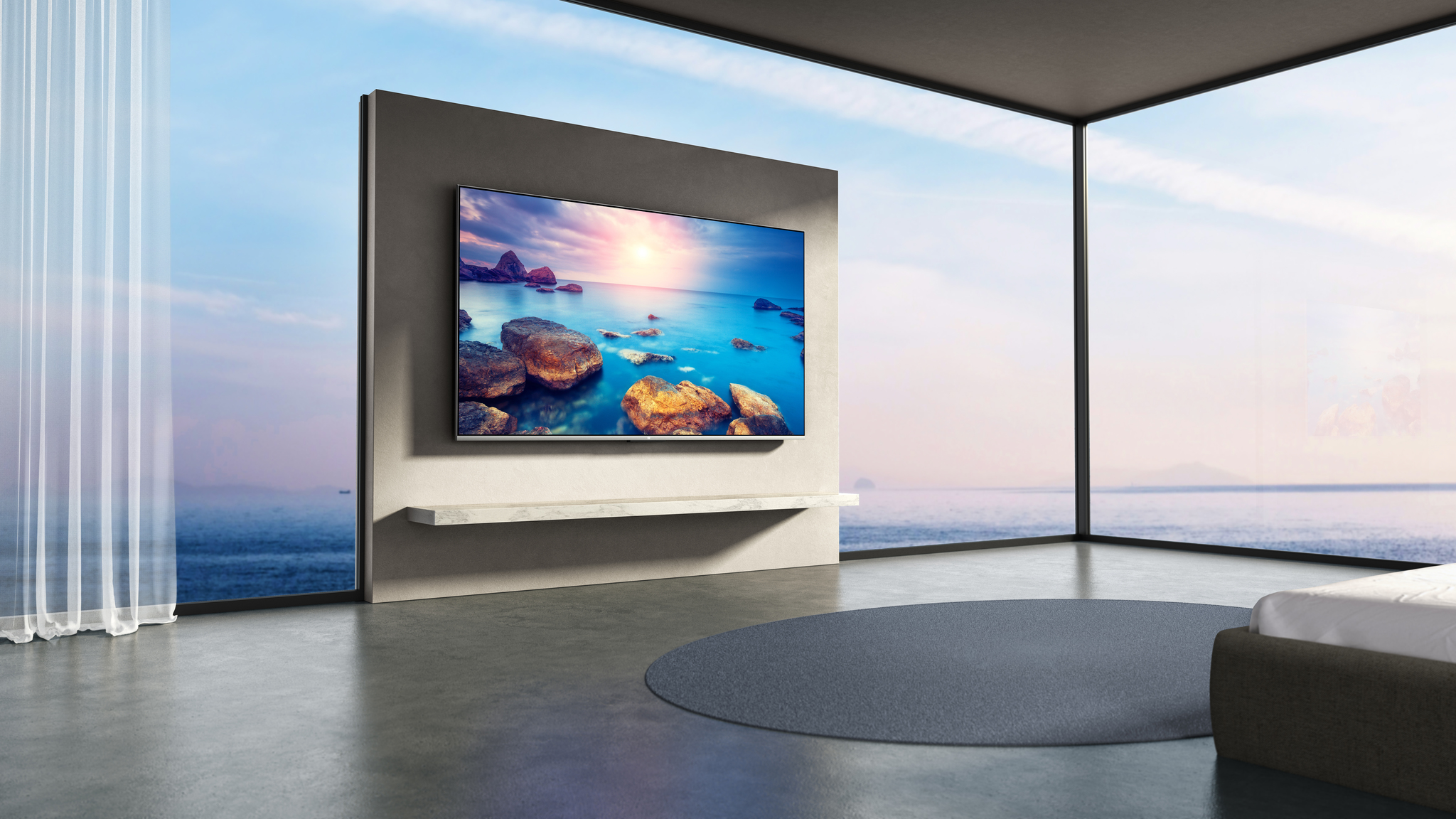Xiaomi's biggest TV is also its best.
My TV viewing habits over the course of the pandemic have been erratic to say the least. I dove into my Netflix queue with gusto last August only to be immediately letdown with the quality of the content; Netflix's strategy of greenlighting every idea it comes across is starting to wear thin.
And even though I have plenty of great TV shows and movies to stream from Disney+ Hotstar, Prime Video, and the more niche services (MUBI is an easy recommendation), I just couldn't get myself to do so for most of 2021. Other than the bi-weekly Formula 1 event, I didn't bother with switching on the TV for most of 2021. Although I got the Mi QLED TV over four months ago, I didn't stream enough content to justify writing a full review.
Instead, I read a lot of books; I aim to hit at least 75 books a year, but I fell woefully short of that goal last year , so I tried to change things in 2021. I went through 30 books in the last four months, including a yearly re-reading of LOTR. Having finished the Shannara series a few weeks ago, I finally felt ready to delve back into my streaming catalog, starting off with Loki — which was surprisingly delightful — and moving on to Ragnarok, Mythic Quest, and a whole load of British panel shows.
Having streamed several dozen hours' worth of content over the last three weeks, I'm ready to share my thoughts on the TV and what it has to offer in this segment. I've used all the TVs Xiaomi has released over the last three years as well as most QLED options currently available in the market today — including OnePlus' Q1 Pro — so I can confidently say that the Mi QLED 75 is the best value if you're looking for a large-screened TV with a fantastic picture quality.
Xiaomi Mi QLED TV 75
Bottom line: The Mi QLED TV 75 nails the fundamentals: it has a premium design, stellar QLED panel with Dolby Vision and 120Hz refresh rate, and useful software features. It misses out on 4K 120Hz gaming, but if that's not a consideration, this is one of the best values you'll find for a large-screen TV.
The Good
- Great picture quality
- Dolby Vision
- Sleek design goes well with modern décor
- PatchWall in addition to Android TV
- Amazing value
The Bad
- Not suitable for 4K gaming at 120Hz
- Same remote as Xiaomi's budget TVs
- Interface is laggy at times
₹127,999 at Flipkart ₹127,999 at Xiaomi India
About this review
I'm writing this review after using the Q1 75 as the living room TV for nearly four months. Xiaomi rolled out several software and stability updates in this time to fix initial bugs and tweak the picture quality. A note on product photos: the TV is in a location that doesn't get much in the way of sunlight, so I wasn't able to take decent product shots. As a result, I had to use Xiaomi's renders throughout this review. Apologies in advance.
Xiaomi Mi QLED TV 75: Price and availability
The Mi QLED TV 75 made its debut in India on April 22, and is available at Flipkart and Xiaomi India's website. The TV retails at ₹127,999 ($1,725), and you get a ₹7,500 ($100) instant discount when you use an HDFC credit or debit card. You'll find easy instalment plans for the TV with most payment institutions as well. Xiaomi sells its TVs in select markets, and it is unlikely the Mi QLED TV 75 will make its way outside India.
Xiaomi Mi QLED TV 75: What I like
With the Mi QLED TV 75, the first thing you'll notice is that it is absolutely gigantic. I knew that it would be larger than the TV I was switching out, but with dimensions of 1367 x 1030mm, it dwarves mainstream 55-inch TVs. It barely fits on my TV cabinet, so if you are eyeing this TV, make sure you measure the dimensions and see if it can be accommodated inside your entertainment center.
The Mi QLED TV 75 is a behemoth, and Xiaomi did a great job with the design here.
Xiaomi did a fantastic job with the design, and the Mi QLED TV 75 looks just as premium as its price tag would suggest. It has ultra-thin bezels on three sides, and the aluminum frame with a sandblasted finish gives the TV an elegant look. Unlike other Mi TV models, the QLED 75 gets a centrally-mounted metal stand that looks much better than the side-mounted legs while giving it added stability.
And as is the case with all Mi TV models, you can easily mount the QLED 75 on a wall — it has standard VESA mounts — and Xiaomi offers a free installation service. The design of the Mi QLED TV 75 is every bit as premium as options that cost twice as much, and it blends easily with modern home décor — this is a TV designed to be the centerpiece of your entertainment unit.
The TV has four full-range drivers and two tweeters that put out 30W of sound, and while that is decent for built-in audio, you're going to want to pick up a Dolby Atmos soundbar or dedicated speakers to use with the TV.
As for the picture quality, the Mi QLED TV 75 ticks all the right boxes. The TV has a 4K 8-bit panel with HDR10, HDR10+, Dolby Vision, and HLG, with maximum brightness of 1,000 nits for HDR content. There are 192 local dimming zones that provide a uniform backlighting, and you'll find MEMC with the ability to go up to 120Hz.
The 75-inch QLED panel is fantastic for streaming HDR TV content and sports.
Color calibration wasn't great out of the box when I first set up the TV, but Xiaomi rolled out a sizeable update a few weeks down the line that fixed the color balance. Of course, you can always tweak the colors to your preferences via the settings, and you will find plenty of customization here.
Contrast levels are excellent, and thanks to the 192 local dimming zones, black levels are uniform. Like its Mi QLED 55 sibling, the QLED TV 75 uses quantum dot tech to deliver increased brightness and contrast. A QLED TV still uses an LCD panel with LED backlighting, but there's a transmissive quantum dot layer in the middle that leads to more vibrant colors and better contrast levels.
The result is that the Mi QLED TV 75 is incredible for streaming HDR content, with Dolby Vision content on Netflix in particular standing out. It was thoroughly enjoyable to watch football and Formula 1 on the TV as well, with MEMC delivering a smoother video. The TV is decent enough for gaming as well; I had it connected to my PS5, and it was a delight to play Uncharted 2 on the big screen.
You'll find all the ports you need on the Mi QLED TV 75.
As for port selection, the Mi QLED TV 75 has two HDMI 2.0 ports, a single HDMI 2.1 with eARC, two USB 2.0 ports, 3.5mm and optical out, as well as Ethernet connectivity. On the wireless side of things, there's Bluetooth 5.0 and Wi-Fi ac with 2x2 MIMO. I usually connect the living room TV over Ethernet, but I used it with Wi-Fi for two weeks and didn't see any issues when streaming Dolby Vision content on Netflix or 100Mbit Blu-ray files from my home NAS.
Coming to the software side of things, the Mi QLED TV 75 shares similarities with other Mi TV models in that it offers both Android TV and Xiaomi's own PatchWall interface. Both interfaces have a lot to offer, but for my use case, I turn to Android TV. I tend to turn off all recommendations — I don't need Netflix telling me what to stream — so I do just that in Android TV. All I need is a grid of apps that let me access the services I want to use, and Android TV is great at doing that.
But if you use a set top box and want tighter integration in terms of software, PatchWall is easily the best option around. The software gives you the ability to search across 25 streaming services — as well as your DTH provider — and gives you recommendations based on the content you stream. And when you need to stream a video from your phone, there's Chromecast built-in, and the Mi QLED TV 75 shows up as a Cast target. In short, this is one of the best Android TVs you'll find in this category.
Xiaomi Mi QLED TV 75: What needs work
While the Mi QLED TV 75 nails the fundamentals, there are a few shortcomings. First up is the remote; it's the same plastic remote that you find on Xiaomi's entry-level TVs. Sure, it is a good enough remote in its own right, but for a TV in this category, I would have liked to see Xiaomi offer a more premium option.
You miss out on 4K gaming at 120Hz here, and the remote is identical to that of budget Mi TVs.
Then there's the interface itself. The TV has 2GB of RAM and features a quad-core chipset with Cortex A55 cores, and while that should be adequate, the UI has noticeable lag at times. This was a huge problem in the week I set up the TV, but following an update, it wasn't as big an issue. However, the fact that a TV of this caliber has any lag or stutter is a letdown, and more memory would have gone a long way in fixing these issues once and for all.
Of course, the biggest issue with the Mi QLED TV 75 is that it cannot handle 4K gaming at 120Hz. You'll have to turn down the resolution to 1080p to unlock 120Hz or switch to 4K at 60Hz. This makes the TV less than ideal for use with the PS5 and Xbox Series X, and while you get HDR gaming and great visuals, it isn't ideal for gamers looking for a future-proof option.
Xiaomi Mi QLED TV 75: The competition
If you're looking for a 75-inch TV in India, you will find a few decent options. Sony's X80J has a 4K panel and features Sony's X1 image engine, and it runs Google TV. And while the LCD panel has a lot to offer, it doesn't measure up to the QLED panel you get on the Mi QLED TV 75, and at ₹199,490, you are paying a premium.
Samsung also has a decent option in this category in the TU8000, with the TV offering a 75-inch panel with thin bezels, HDR10+, and an LCD panel that has vibrant colors. But at ₹195,000, it is also significantly costlier than Xiaomi's offering.
Xiaomi Mi QLED TV 75: Should you buy it?
You should buy this if ...
- You want a large-screen TV with a great QLED panel
- You're looking to stream Dolby Vision content
- You want highly customizable software
- You're in the market for value
You should not buy this if ...
- You want a TV for use with a PS5 or Xbox Series X
Ultimately, Xiaomi got a lot of things right with the Mi QLED TV 75. This is the most premium TV in Xiaomi's portfolio — and the costliest product it sells in India at the moment — and it has nailed the basics. The TV delivers a premium design, a fantastic QLED panel with a high level of customizability, and the dual-interface system means you can choose between Android TV or Xiaomi's offering.
Yes, there are a few downsides as well, particularly around the fact that the TV can't handle 4K gaming at 120Hz. That will make the Mi QLED TV 75 ineligible for those looking to pick up a large-screen TV to use with their PS5 or Xbox Series X, but for what it's worth, it still does a great job with HDR gaming. So if you're okay with that particular trade-off and want a large-screen TV, the Mi QLED TV 75 is a great overall option.
Xiaomi Mi QLED TV 75
Bottom line: The Mi QLED TV 75 nails the fundamentals: it has a premium design, stellar QLED panel with Dolby Vision and 120Hz refresh rate, and useful software features. It misses out on 4K 120Hz gaming, but if that's not a consideration, this is one of the best values you'll find for a large-screen TV.
Source: androidcentral
